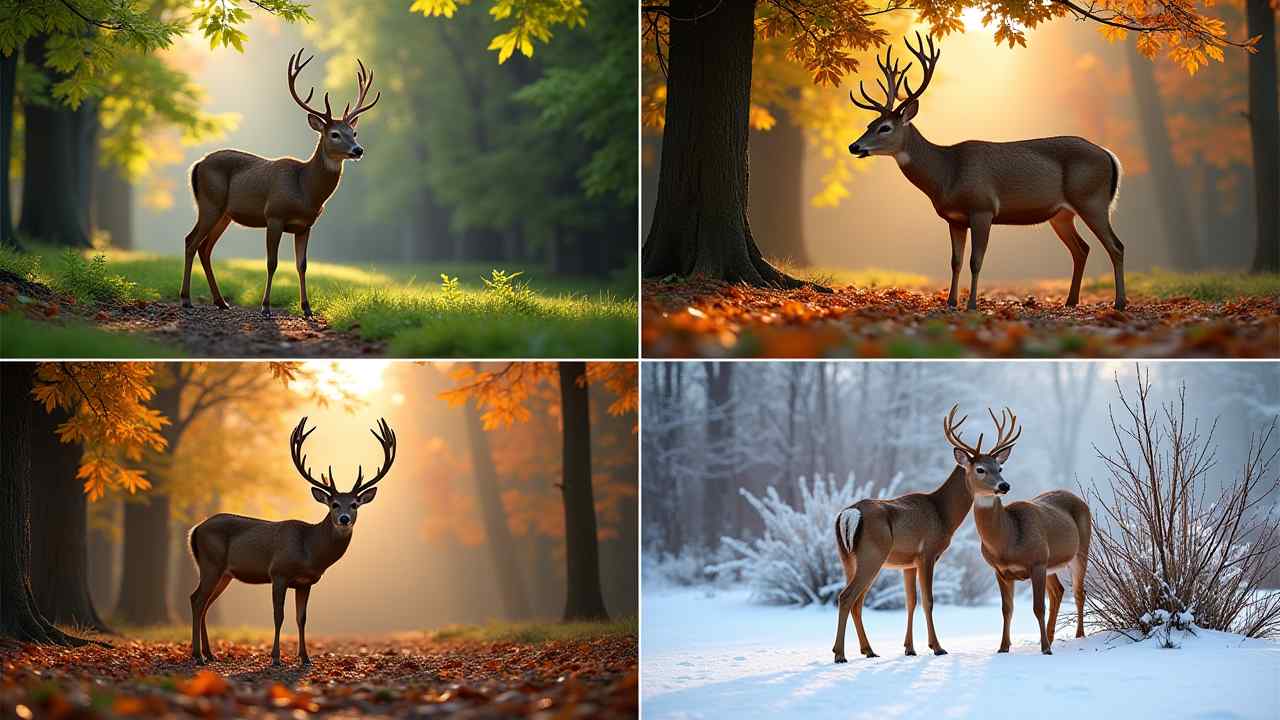
🦌 What is a Deer's Diet? A Guide to Seasonal Eating Habits
🌿 What is a Deer's Diet? A Guide to What Deer Eat Through the Seasons 🌿
Deer are one of the most adaptable animals in the world. They can be found in forests, mountains, and even suburban backyards. A key to their success is their flexible diet. But what do these graceful herbivores actually eat?
The most important thing to know is that a deer's diet is not static. It changes dramatically throughout the year. What a deer eats in the spring is very different from its food in the winter. They are masters of eating what is available and nutritious.
This guide will explore the fascinating and varied diet of deer. We will look at what they eat in each season. Let's dive into the world of these amazing browsers. 🦌
🤔 Are Deer Grazers or Browsers?
First, it is important to understand a key distinction. Deer are primarily "browsers," not "grazers." This is a crucial part of their identity. It separates them from animals like cattle or sheep.
A grazer mostly eats grasses from the ground. A browser, on the other hand, eats leaves, twigs, and buds from woody plants. They will also eat a variety of other plants, known as forbs. This is why you often see deer nibbling on shrubs and saplings.
Their digestive system is specially adapted for this tough food. Like a cow, a deer is a ruminant. They have a four-chambered stomach. This allows them to break down the tough cellulose in their plant-based diet.
☀️ What Does a Deer's Diet Look Like in the Spring and Summer?
Spring and summer are times of abundance. The deer diet during these months is rich and varied. The focus is on new, tender, and protein-rich growth. This helps them recover from winter and raise their young.
During this time, deer will feast on fresh green leaves. They eat from trees and shrubs. They also consume a wide variety of herbaceous plants. This includes wildflowers and nutritious farm crops like soybeans and alfalfa.
This high-protein diet is essential. For does (female deer), it provides the nutrients to produce milk for their fawns. For bucks (male deer), it fuels the incredible process of growing a new set of antlers.
🍂 What is a Deer's Diet in the Autumn?
Autumn is a critical time for deer. Their focus shifts from protein to high-energy foods. They need to build up fat reserves to survive the coming winter. The deer diet now turns to fallen nuts and fruits, known as "mast."
Hard mast is the most important food source. Acorns are a deer's number one food in the fall. They are very high in fat and carbohydrates. Deer will also eat beechnuts and hickory nuts.
They also seek out soft mast. This includes fallen fruits like apples, pears, and berries. In regions like Türkiye, they will also enjoy seasonal foods. This includes fallen chestnuts (kestane) and olives (zeytin). This period of heavy eating is vital for their winter survival.
❄️ How Do Deer Survive on a Winter Diet?
Winter is the time of scarcity. The lush greens and rich nuts are gone. The deer's diet becomes a matter of survival. They must rely on the least nutritious food source: woody browse.
During the cold months, deer eat the buds and twigs of woody plants. They will browse on shrubs and saplings. They will also eat evergreen plants like cedar or hemlock if available. Their metabolism slows down, and they move less to conserve energy.
This is why the fat they stored in the autumn is so crucial. It provides the energy they need to make it to spring. It is a true testament to their resilience. It is also why you should never feed deer in the winter. Human food can disrupt their delicate digestive system and do more harm than good. 🚫